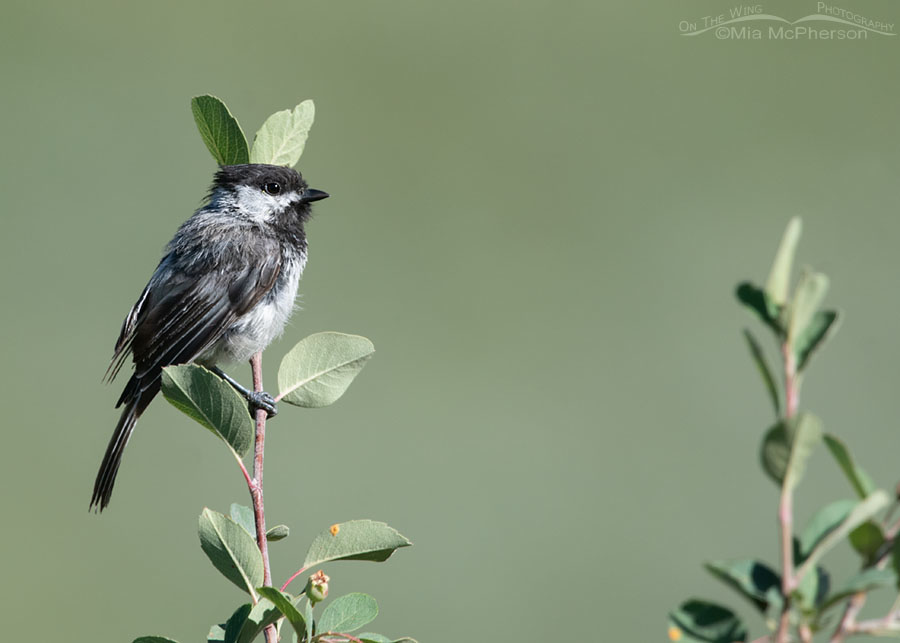 Molting Black-capped Chickadee – Nikon D500, f7.1, 1/800, ISO 400, Nikkor 500mm VR with 1.4x TC, natural light
Molting Black-capped Chickadee – Nikon D500, f7.1, 1/800, ISO 400, Nikkor 500mm VR with 1.4x TC, natural light
A few days ago I shared an image of a messy looking Orange-crowned Warbler and today the messy looking bird I am writing about is a Black-capped Chickadee that I photographed two days ago in the Wasatch Mountains.
One way I can tell that this Black-capped Chickadee is molting is because some of the primary flight feathers have been replaced and some are worn and tattered looking. The throat of this chickadee doesn’t look bad in this photo but in others where it was singing I could see some bare skin that typically we would never see. Some of the body feathers look extremely worn and that could be because of taking care of its young combined with molting. Birds of North America (BNA) online states that Black-capped Chickadees molt from July through October so this one is on the early end of the molt period.
This Black-capped Chickadee’s plumage isn’t in prime condition. I feel like my work as a bird photographer includes taking images of them looking great and not so great because it is all part of the cycle of their lives.
This Black-capped Chickadee was perched at the very top of a serviceberry for a few seconds before it flew off and disappeared. So far this year I haven’t seen any chickadee fledglings or chicks but I hope to see some soon.
Life is good.
Mia
Click here to see more of my Black-capped Chickadee photos plus facts and information about this species.


I especially like images of animals (including humans) who don’t look like the “perfect specimen.” I embrace the imperfect! 🙂
Given how busy they are while feeding youngsters even that would be sufficient reason for a bit of scruffiness. And it is a charmer anyway.
It does look scruffy. I have many families in my yard. The juveniles make me smile, they only say chica, chica, they have not mastered the “dee” yet.
Who needs wings when you’ve such a pair of ears!
You obtained good eye shine. For some reason so many of my photos of chickadees (and bush-tits) have lackluster eyes, not good as they do not stand out against the dark plumage. Many of our local breeding birds are also starting to molt.